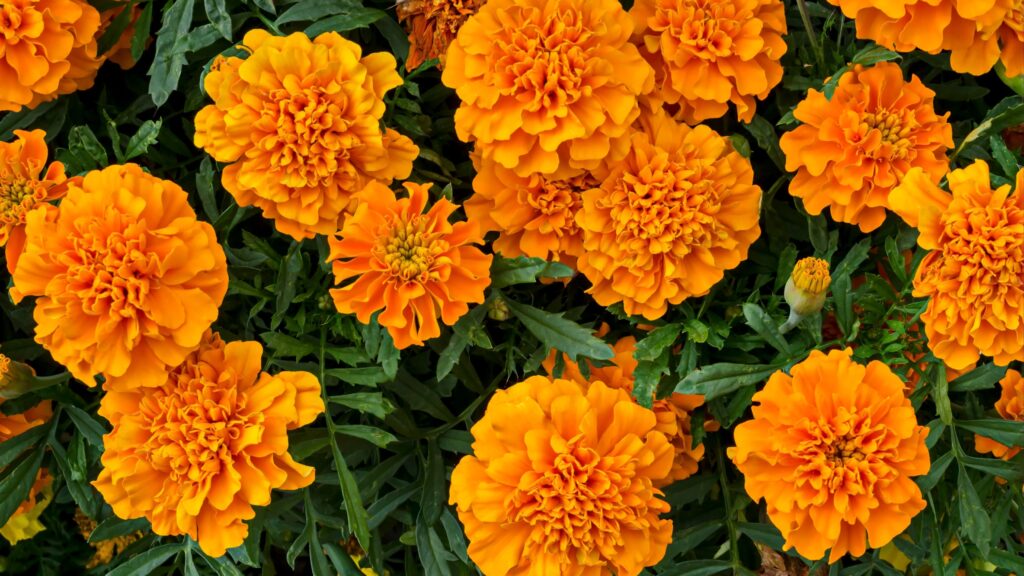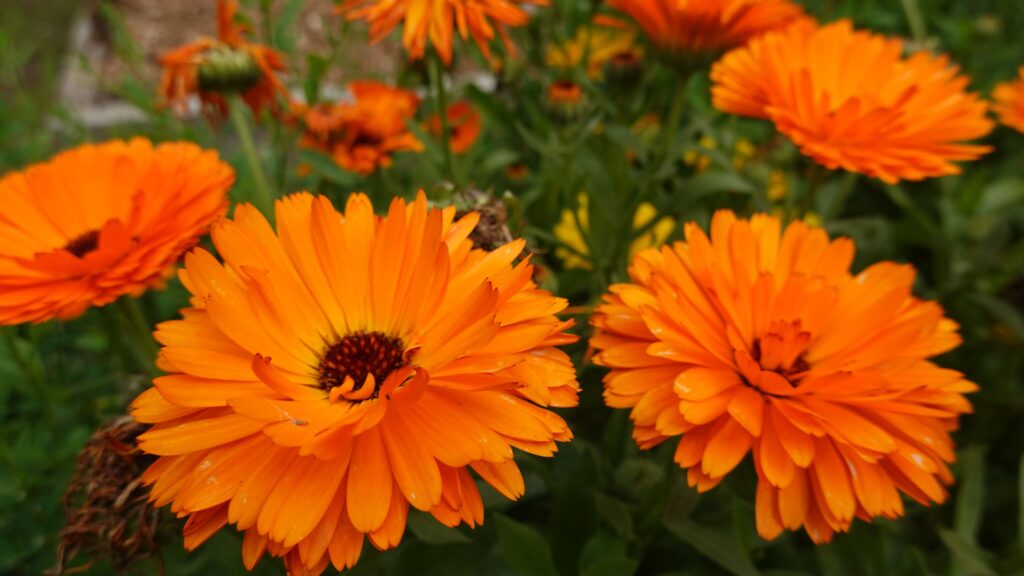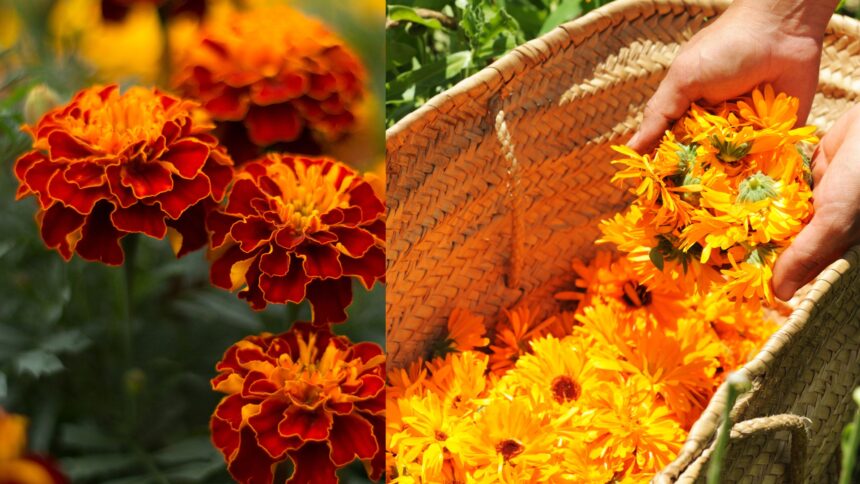Are marigold and calendula the same? This is a question that has puzzled many a gardener, herbalist, and nature enthusiast. At first glance, these two flowers may seem identical, with their bright orange and yellow hues, but are they truly one and the same? In this article, we’ll delve into the world of botany and explore the differences and similarities between marigold and calendula, two flowers that have been used for centuries in various aspects of human life.
The Confusion Begins
The confusion surrounding marigolds and calendula stems from their physical resemblance. Both flowers belong to the daisy family (Asteraceae) and have similar growth habits, with bright, showy blooms that follow the sun. They are also both used in herbal medicine, cooking, and as ornamental plants in gardens. However, despite their similarities, marigolds and calendula are two distinct species with different origins, properties, and uses.
Marigold: The Bright and Bold

Marigold, also known as Tagetes spp., is a genus of flowers that originated in the Americas. There are over 50 species of marigold, with the most common being Tagetes erecta (African marigold) and Tagetes patula (French marigold). Marigold flowers are typically bright orange or yellow, with strong, pungent scents that repel nematodes, whiteflies, and other pests. They are often used as companion plants in gardens to protect crops from damage.
Marigold has been used for centuries in traditional medicine, particularly in Ayurvedic and Unani practices. The flowers are said to have anti-inflammatory, antiseptic, and antibacterial properties, making them useful in treating skin conditions, wounds, and digestive issues. Marigold is also used as a natural dye, giving fabrics a vibrant yellow or orange hue.
Calendula: The Soothing and Gentle

Calendula, also known as Calendula officinalis, is a species of flower that originated in the Mediterranean region. It is also known as a pot marigold, although this name can be confusing, as it is not a true marigold. Calendula flowers are typically bright yellow or orange, with a more delicate appearance than marigolds. They have a mild, sweet scent and are often used in herbal teas, salves, and ointments.
Calendula has been used for centuries in traditional medicine, particularly in European folk medicine. The flowers are said to have anti-inflammatory, antimicrobial, and antioxidant properties, making them useful in treating skin conditions, wounds, and digestive issues. Calendula is also used in cosmetics, as it is believed to promote skin health and reduce the appearance of fine lines and wrinkles.
Key Differences
So, are marigolds and calendula the same? While they share some similarities, they are distinct species with different properties and uses. Here are some key differences:
- Origin: Marigold originated in the Americas, while calendula originated in the Mediterranean region.
- Appearance: Marigold flowers are typically brighter and more pungent than calendula flowers.
- Scent: Marigold has a strong, pungent scent, while calendula has a mild, sweet scent.
- Properties: Marigold is said to have anti-inflammatory, antiseptic, and antibacterial properties, while calendula is said to have anti-inflammatory, antimicrobial, and antioxidant properties.
- Uses: Marigold is often used as a companion plant, natural dye, and in traditional medicine, while calendula is often used in herbal teas, salves, and ointments, as well as in cosmetics.
Conclusion
In conclusion, while marigolds and calendula may seem identical at first glance, they are two distinct species with different origins, properties, and uses. Marigold is a bright and bold flower with a strong scent, often used as a companion plant and in traditional medicine. Calendula, on the other hand, is a soothing and gentle flower with a mild scent, often used in herbal teas, salves, and ointments, as well as in cosmetics. By understanding the differences between these two flowers, we can appreciate their unique qualities and uses, and harness their potential to improve our lives and the world around us.




